Calculation and Analysis of Moscovia's Tank Potential as for the Beginning of 2024 Based on Satellite Data

RESURGAM EDITORIAL
 1. Summary conclusions (brief summary)
1. Summary conclusions (brief summary)
The study was prepared and implemented by the collaboration of the analytical communities Resurgam, Military Prophet and Mortis Aeterna.
*Moscovia is the historical and correct name of the Russian Federation.
Our calculations showed that within 5–7 months, the central tank reserve bases of Moscovia were reduced by almost 400 tanks.
The average rate of exhaustion of the bases is 44–75 units per month. This rate allows to cover current losses, but its sustainability throughout 2023 and early 2024 (and other factors, as described in detail later in the text) indicates that the Moscovia military-industrial complex has reached the “scaling ceiling”: in production/modernization/restoration of tanks.
The rate of deconservation has slightly decreased in comparison to 2022/23, but our observation is that the reason is primarily a decrease in the quality of the equipment being deconserved. These forces tank repair plants to spend more time and resources to restore a unit of equipment.
The analysis of the main armored vehicle repair plants showed a large overcrowding of areas, which indicates that these plants (and not only) are overloaded.
In the study, we covered up to 95% of the main places where Moscow's “tank reserves” could be stored. Our estimate showed that 3150 tanks at the central tank reserve bases and 1300-1500 tanks at waiting areas and near the workshops of the main armored repair plants remain suitable for deconservation/restoration.
Our calculation was as conservative as possible, and we covered everything that could be “hypothetically” restored. However, the technical condition of the 3,150 units remaining at the bases is very different and often very questionable. Tanks from 1311 bases remain the most capable of being restored.
This number should be enough for Moscow to support the restoration of tanks uninterruptedly until the end of 2025 and the beginning of 2026.
Based on the information available, we have identified three main scenarios for the exhaustion of the enemy's tank reserves:
“optimistic” — 12–18 months;
“moderate”— 18–24 months; and
“pessimistic” —more than 24 months.
2. Counting the number of tanks at the central tank reserve bases and at the awaiting sites of armored repair plants.
2.1 Main research parameters and results of the calculation.
The ARI study was used to establish the pre-war number of tanks at the storage bases:
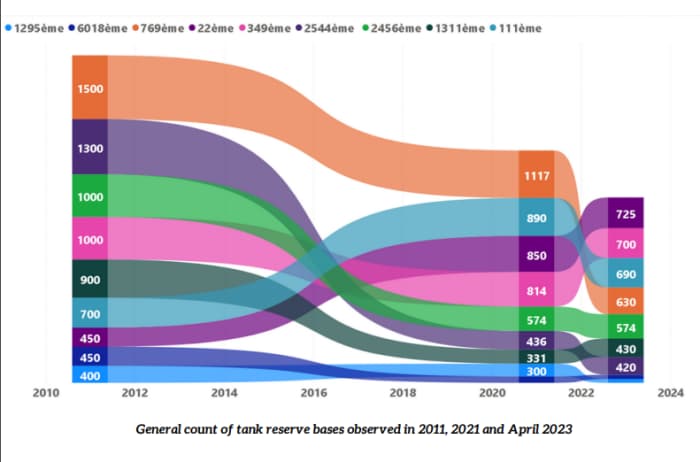 The Jompy study was used to estimate the pre-war number of tanks at armored vehicle repair plants (“AVRPs”):
The Jompy study was used to estimate the pre-war number of tanks at armored vehicle repair plants (“AVRPs”):
 For the bases where new images could not be obtained, the figures from the latest Covert Cabal research for October 2023 were used. These bases are marked with “*”
For the bases where new images could not be obtained, the figures from the latest Covert Cabal research for October 2023 were used. These bases are marked with “*”
The survey was obstructed by snow cover and partially limited by the quality of some images. Errors are possible, but our estimates are conservative. In case of doubts about the suitability/unsuitability, classification of a piece of equipment as a tank or an infantry fighting vehicle, the count was always inclined towards the worse (larger) option.
2.2 Counting the number of tanks at central tank reserve bases
The storage bases did not include tanks without turrets and tanks in the recycling areas, which are almost completely disassembled for spare parts and cannot be used even as “donors” for spare parts. Our conservative calculation resulted in the following figures, which we have summarized in a comparative table.
| Base | Quantity 2022 (ARI) | October 2023 (Covert Cabal) | January/March 2024 (Vishnu's estimate in cooperation with Resurgam and Mortis Aeterna) | Potential tank types |
|---|---|---|---|---|
| 22 (Buoy) | 850 | 450 | 250 (as of January 2, 2024) | 250 units T-80 UD |
| 111 (Halgaso) | 890 | 430 | 340 (as of February 29, 2024) | 260 units Т-62/55 and 80 units T-80BV |
| 1295 (Arseniev) | 300 | 55 | 30 (as of February 28, 2024) | 30 units Т-55 |
| 2544 (Kozulka) | 436 | 300 | 300 (as of December 2, 2023) | |
| 769 (Vagzhanova) | 1117 | 700 | 750 (as of March 21, 2024) | 300 units Т-72 and 450 units Т-62/Т-55 |
| 1311 (Verkhnyaya Pyshma) | 331 | 550 | 550 (as of March 7, 2024) | 550 units Т-72 |
| 349 (Topchikha) * | 814 | 390 | ||
| 103 (Shilovo) * | 574 | 400 | 400 (as of October 2023) | 400 units T-80 UD |
| 6018 (Kamyshlov) | 200 | Did not count | 40 (January 2, 2024) | 40 units T-80BV |
| Other bases | 250 | Up to 100 | ||
| Up to 100 | 5512 | 3525 | 3150 |
Bases without recent images are marked with asterisks*.
Due to possible errors, the number of “good” tanks at these bases may vary between 3050–3250 units.
More details about the bases:
22nd central reserve base in Bui
Significant changes are noticeable at the 22nd base in Bui, where half of the T-80U/UDs with Kharkiv engines were removed from conservation, compared to the last available Osint calculation as of October 2023.
As of January 2024, there were 200 fewer tanks at this base. In total, only about 250 T-80 UD tanks remain at the base, available for restoration or as spare parts donors, out of an initial number of 850 as of early 2022.
General look of the base at the beginning of 2023:
 Photo: MAXCARE. MAXCARE
Photo: MAXCARE. MAXCARE
 Photo: MAXCARE. MAXCARE
Photo: MAXCARE. MAXCARE
111th Central Tank Reserve Base (Komsomolsk-On-Amur)
At the 111th base, the last major movement of tanks took place in the autumn of 2023 in the amount of 40 units. Since then, tank activity has dropped slightly, as the 103rd Armored Repair Plant (ARP) is overloaded and cannot accept more vehicles.
According to Covert Cabal's research, as of October 2023, it listed 430 “good tanks”.
According to our estimates, as of February 29, 2024, 340 tanks remain at the base (260 T-62/55 and 80 T-80BV), which is 90 less than in October 2023. These tanks are in various states of repair, but we have identified them as appropriate (for deconservation or cannibalization).
The view of the 111th base earlier:
 Photo: MAXCARE. MAXCARE
Photo: MAXCARE. MAXCARE
 Photo: MAXCARE. MAXCARE
Photo: MAXCARE. MAXCARE
1295 central tank reserve base (Arsenyev)
The last tanks (T-55) suitable for restoration are being removed from storage at the 1295th base. Between October 2023 and February 28, 2024, the number of tanks at this base decreased by 25 units. In total, there are only about 30 tanks left at the base, in comparison to 300 tanks as of early 2022. The base is nearing full exhaustion of its resource potential in the upcoming months.
The view of the 1295th base in early 2023:
 Photo: MAXCARE. MAXCARE
Photo: MAXCARE. MAXCARE
 Photo: MAXCARE. MAXCARE
Photo: MAXCARE. MAXCARE
At 769, 103 and 349, vehicles were reorganized without significant quantitative changes since the last Covert Cabal survey. Poor quality imagery does not show much activity or a significant decrease in the number of vehicles, only partial relocation.
As of March 21, 2024, we estimate that there are 48 more usable tanks at 769 base compared to Covert Cabal's October 2023 estimate. This is likely related to our more “conservative” estimate of usable tanks.
The 6018th base was left with a small number of tanks - about 40 units in poor condition, probably usable only as spare parts donors, but we took them into account. The base is practically exhausted in terms of tanks. In 2022, more than 200 tanks were stationed at this base.
In general, the rate of deconservation has dropped significantly due to the exhaustion of tanks that were stored in good conditions and could be restored very quickly. The speed of deconservation is also affected by the capacity of armored vehicle repair plants (AVRPs), which were overloaded by the last massive deconservation of tanks in the spring of 2023.
To understand how many more tanks are at the waiting sites of AVRPs and to approximately monitor the speed of tank restoration, we decided to count the main armored personnel carriers of Moscovia, which most similar OSINT studies rarely take into account.
2.3 Calculation of tanks at the waiting sites of the main armored repair plants.
| AVRP | 2022 (Jompy) | 2024 (Vishchun in cooperation with Resurgam and MortisAeterna) | Tank types |
|---|---|---|---|
| №560 | 183 | 70-100 | 70-100 units T-72 |
| №61 | 381 | 250 | |
| Omsktransmash | 0 | 320-350 | 320-350 units T-80 |
| №163 | 63-82 | Up to 100* | |
| №103 | 481 | 600-700 | 600-700 units T-62 |
| Total | 1100-1200 | 1300-1500 |
560 AVRP
At the 560th plant, we can see the usage of about 80 of the best tanks that were previously on the site.
Was:
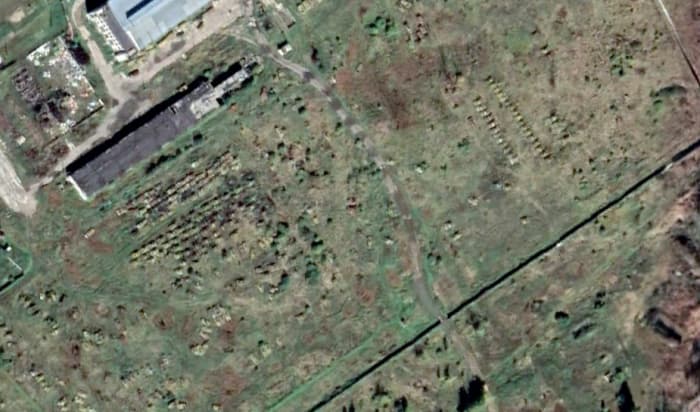 Photo: MAXCARE. MAXCARE
Photo: MAXCARE. MAXCARE
 Photo: MAXCARE. MAXCARE
Photo: MAXCARE. MAXCARE
61 AVRP
At the 61st plant, the number of tanks on the main site has significantly decreased (by approximately 130 units). The plant is engaged in repairing damaged vehicles and restoring T-80s.
Was:
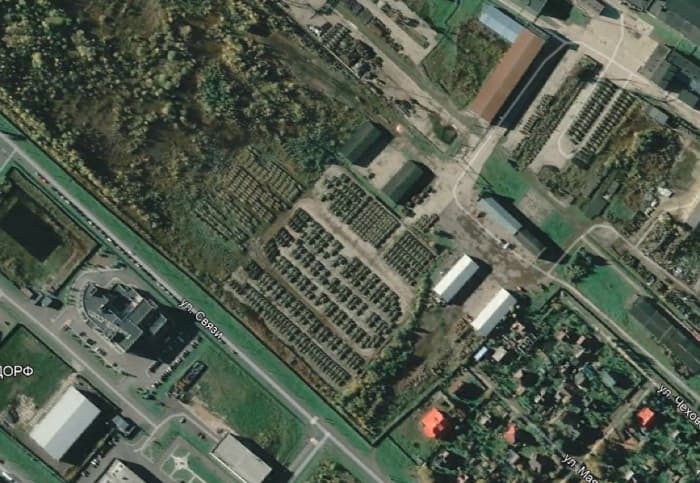 Photo: MAXCARE. MAXCARE
Photo: MAXCARE. MAXCARE
 Photo: MAXCARE. MAXCARE
Photo: MAXCARE. MAXCARE
Omsktransmash
No significant changes at Omsktransmash compared to 2023. The quality does not allow accurate assessment of the decrease in the number of tanks (to filter out empty, disassembled boxes from those suitable for repair), but the decrease is clearly visible near the workshops where the most usable ones were probably kept.
Given the estimated rate of tank modernization to the T-80BVM level of one battalion kit per 2 months, 120–130 tanks should have been produced between June 2023 and March 2024. In June, approximately the same number of tanks were located near the workshops, which was no longer observed in the new images of March 13, 2024.
An example of tanks near the workshops:
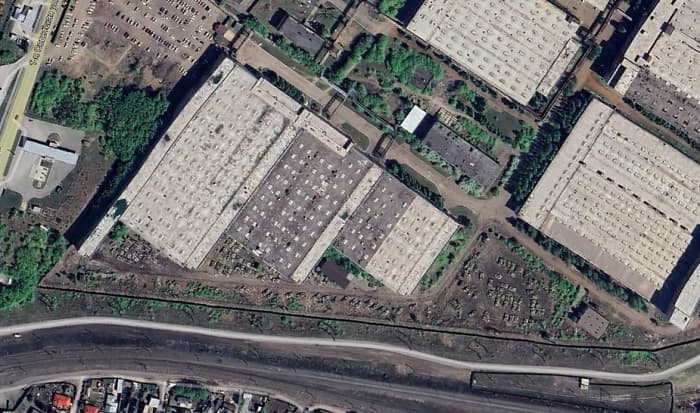 Photo: MAXCARE. MAXCARE
Photo: MAXCARE. MAXCARE
 Photo: MAXCARE. MAXCARE
Photo: MAXCARE. MAXCARE
163 AVRP
The quality of the image of the 163rd plant did not allow us to count the tanks because it is almost impossible to distinguish them from armored personnel carriers. But the number of “boxes” on the plant's territory has increased. Therefore, we are counting under the worst-case scenario that all of them are usable and all of them are tanks, but this is most likely not the case. The potential number as of January 16 is estimated at 100 units (boxes).
103 AVRP
As for the 103 plant, the pre-war number is estimated at 481 units. As of March 8, 2024, between 600–700 units.
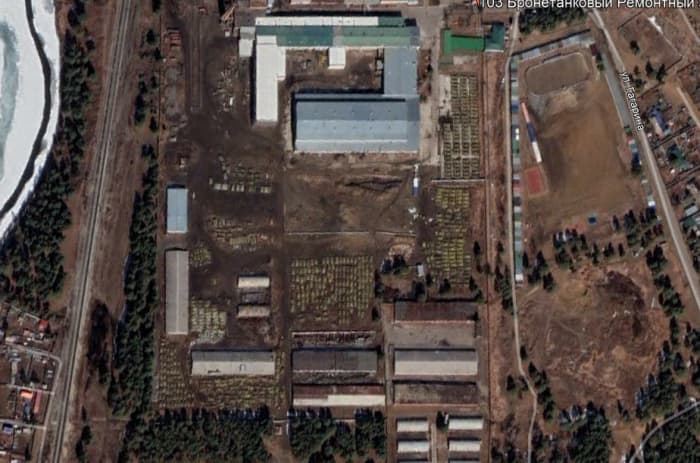 Photo: MAXCARE. MAXCARE
Photo: MAXCARE. MAXCARE
 Photo: MAXCARE. MAXCARE
Photo: MAXCARE. MAXCARE
It is important to note that tanks from the “old” zones are in small numbers, but still in use, so they are included. In general, the calculation was carried out as conservatively as possible, if there was a doubt about “suitable” or “not”, it was always counted in the first category.
As for the “new” zones, several hundred additional pieces of equipment appeared there, the vast majority of which are tanks. What to count is a matter of debate, because any “limitedly suitable” equipment can be used. What matters is the production speed.
The plant has been set the task of producing 1 battalion set of T-62M tanks in 2 months, i.e. 600 tanks in 3 years. Not 800, as the journalists have picked up on. 800 is the total plan for the number of repaired vehicles in 3 years, including BMP-2 and BRDM-2M. It would be logical to assume that all T-62s from the 111th base in Halgaso, which is gradually being exhausted - from 890 units suitable for 2022 to 340 units as of February 29, 2024, are being sent here.
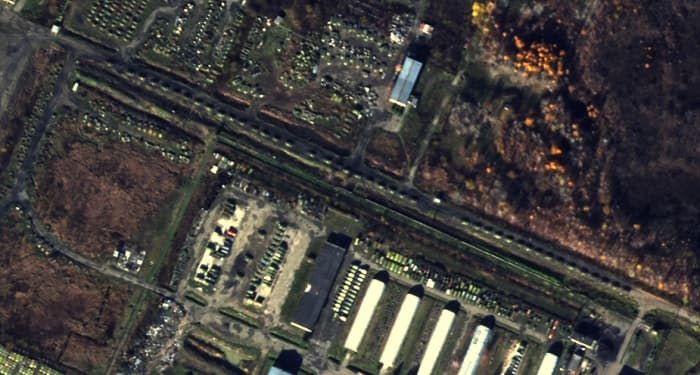 Photo: MAXCARE. MAXCARE
Photo: MAXCARE. MAXCARE
At the same time, after this event, one of the zones of tanks at the plant noticeably increased by about the same number compared to the summer of 2023 - and these tanks are still waiting to be repaired.
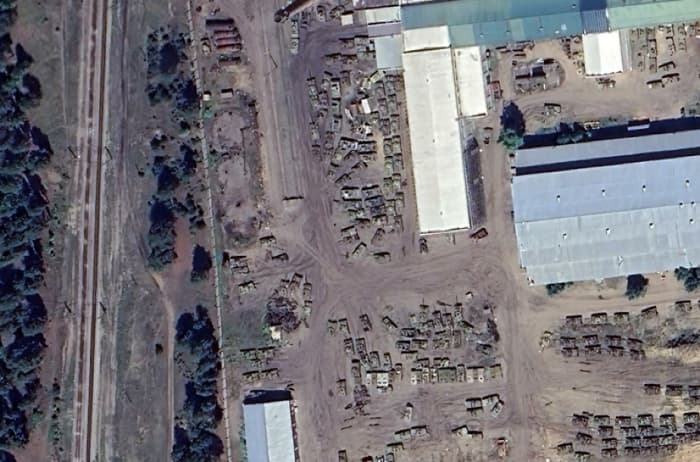 Photo: MAXCARE. MAXCARE
Photo: MAXCARE. MAXCARE
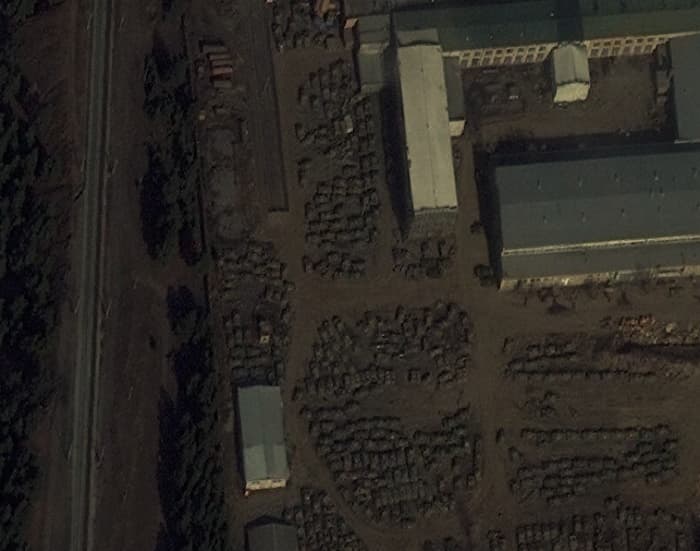 Photo: MAXCARE. MAXCARE
Photo: MAXCARE. MAXCARE2.4 Conclusions from the CTRB and AVRP calculations
In total, there are 3050-3250 “conditionally suitable for restoration” tanks at the bases (although the subject of their quality is also debatable, but we remind you that our calculations are as conservative as possible, in the direction of the “worst” option for us) + 1300–1500 tanks are waiting at the factories for restoration/modernization or use as spare parts donors. These tanks are in very different conditions, but we still take them into account.
Therefore, with almost all the main places (up to 95%) of the potential concentration of tank reserve storage sites counted, we can name a figure of 4300–4750 tanks that can potentially be restored or used as donors in the occupation army of Moscovia. Other small bases have almost no tanks left, or they are available in single numbers.
In general, the resource of 4300–4650 tanks with the current rate of losses is enough for Moscovia to ensure maintenance and repair of losses for 2-2.5 years. Potentially until the beginning of 2026.
Another question is that we say 2-2.5 years with the condition of using reserves at 0, but the key phrase is “recovery rate” because for a long time the main tank repair plants have had enormous queues due to the inability to quickly restore the tanks submitted for repair. Each time the tanks are deconserved, they will be in a worse condition, which will require more time and components to restore them.
Therefore, the production capacity of armored vehicle repair plants will determine the speed of tank restoration and production, and, consequently, the exhaustion of armored forces in the tank element.
This will be discussed in the next section.
3. The main questions we were looking for the answers to.
3.1 What do analysts say about Moscow's tank restoration/production?
The biggest problem with analysts' estimates of tank restoration/production rates is that they do not articulate the difference, so most claim that Russia “produces” 100 tanks per month, which simply isn't true.
According to Andriy Tarasenko's estimates, Moscovia is capable of “producing from scratch” about 60 T-90M tanks per year. For example, as of September 2023, UVZ was working on the production of the 192nd tank from a total of 270 units ordered under the contract for 2017-2021.
To the honor of the UK Ministry of Defense, in its updates, when referring to the figure of “100 tanks per month,” the MoD uses the verb “generate,” which means that it takes into account both produced, modernized, and deconserved tanks that have been tested but not modernized before being sent to the front.
Pavlo Luzin from The Jamestown Foundation think-tank. He estimated the “production” (i.e., “from scratch” and deep modernization) of tanks in Moscovia at a maximum of 200 units per year (15-20 per month “from scratch”).
Our research has found that the rate of tank deconservation has been approximately 44–75 units per month over the past 5 months — possibly slightly more or less, depending on the month and the exact date of the image. Manufactured from scratch tanks is a very controversial subject. There are deep modernizations of the T-90M, T-80BVM, and T-72B3 that are counted as new, but these are “deep modernizations” based on existing tank hulls from the reserve. Such “deep modernizations” and “new” are estimated at up to 200 units per year (16 per month). Researcher Tarasenko estimated 60 T-90M units per year. Luzin even says 30 units of “new” ones. Everything else is the deconservation of stocks.
The share of truly new (manufactured) ones is only 1/6 or less — the rest are reserves from storage bases, which also have their limits. They are expected to be completely exhausted by the end of 2025.
3.2 What is the potential of this recovery/production? What is the ceiling of this recovery and what factors (production, human, technological) does this recovery run into?
Taking into account long-term observations, pace estimates, and the analysis of “not one or two” studies, we conclude that the potential for increasing production of new tanks has already reached its scaling peak, even despite the available financial resources for this scaling.
For example, in 2021, according to Andriy Tarasenko's estimates, Moscovia managed to produce 80 T-90M tanks, taking into account the existing stocks of components, which were partly exported and purchased under three-year programs. Hence, today (relatively speaking), the main Western components were not purchased as part of “parallel imports” but were already available thanks to the corresponding stock of components that was created for 2022-2024/25 according to the contracts before February 24. Now this stock is being actively exhausted as a result of the need to massively modernize and remove tanks from storage bases. Once these stocks are exhausted, the key issue will be not so much the evasion of sanctions as the time required to ensure this evasion and the cost of additional financial resources to ensure this evasion.
Despite the increase in machine tool production from 5458 units in 2021 to 7743 units in January-September 2023 and the transfer of production to 3-4 variable forms, we are skeptical about further scaling up the potential for modernization of machinery. Collectively, we conclude that as for now, Moscovia has probably reached its “production ceiling.”
The “production ceiling” is based on a number of factors:
Employment in the military-industrial complex is no longer growing, although production is limited by a chronic lack of workforce.
Increased depreciation of equipment as a result of an increase - or, more precisely, a return of production rates to the 2015-2017 level.
Increased hours of labor on the product because of the lack of Western components, spending more time on import substitution or using parallel import methods to evade sanctions.
And here it is worth mentioning once again, one of the details already mentioned, that our calculation recorded an approximate rate of exhaustion of storage bases of 75 tanks per month (the average value). This roughly correlates with what Covert Cabal tracked in its research during 2023. Meaning that this rate is expected to continue at the beginning of 2024. It can be assumed that where Moscovia scales up the production/restoration of tanks, there is a “negative compensation” by the need to renew tanks from storage bases in an even worse condition. This is why the number of tanks produced and restored, despite the scale-up of production at the factories, remains more or less in the same corridor.
3.3 Has the rate of production/recovery reached its ceiling in the Moscovia?
To clarify the answer once again, in our mutual opinion, the rate of production/removal from conservation and restoration of tanks has reached its ceiling and will only continue to decline, as the Russians have mostly deconserved tanks in the “best” condition. As a matter of fact, even tanks of 4–5 categories that can be classified as “scrap” are subject to restoration and potential modernization — the only question is time and capacity, which depend on many factors, including the availability of components and the real possibility of their production.
Our estimates, in general, do not even contradict the Muscovites' own data on 1200-1500 “manufactured” tanks in 2023, only if we assume that “manufactured” includes newly manufactured, deconserved, modernized, and those that have been on the battlefield, were damaged there, and were repaired at a factory or even in field workshops.
3.4 Why is it that the key now is not how many tanks remain at the bases, but how quickly the Moscovia's military-industrial complex is able to bring them up? Is that so?
In fact, the key question is whether the Muscovites will receive armored vehicles from their allies, primarily the North Korea and Iran, as well as China (which is less likely, but this possibility cannot be excluded). Putting this issue aside, it is not so much the rate of tank recovery itself that is important, but the comparison of the recovery rate to current losses at the front. For example, the Australian YouTuber Perun once posted a video in which he noted that under the best possible conditions, and we quote: “If you can't recover losses fast enough, in this scenario, the army can hypothetically fight until the difference between losses and the production and recovery combination is sufficient to eliminate the active combat power of the army and make it unable to fight.”
If the Russians produce new equipment at a pace that exceeds the rate of losses-for example, under conditions of a ceasefire or a freeze in the conflict, or simply because the Armed Forces of Ukraine do not have enough weapons-the Moscow army will actually be able to renew and modernize in an online mode. But this is in the case of an adequate assessment of its own capabilities by the enemy's military command.
The recent months and attempts of “banzai attacks” have brought some territorial gains for Moscovia, but they were incomparable to the losses for these gains. This “” persistence “” can be explained by “” political motives “”: to achieve results before the US elections in order to take maximum advantage of the exhaustion of the Ukrainian Armed Forces on the background of American carelessness, to achieve the greatest possible territorial gains with the belief that after the US elections Moscow will be able to freeze the conflict.
4. Scenarios of exhaustion of enemy tank reserves.
Based on the information collected, we can build basic scenarios for the exhaustion of Muscovia.
Optimistic (12-18 months). Exhaustion of tank reserves due to increased intensity of warfare. The visually confirmed losses of enemy tanks in 2023 are 866 units. These are visually confirmed, add at least 30% (most conservatively) that were not recorded on the Internet, and we get 1125 tanks lost during 2023. That is, the average rate of losses is 93 units per month. Meaning that the production/restoration of tanks from scratch barely covers the needs of the frontline, and with the exhaustion of the most suitable tanks from the stocks, the situation is expected to worsen. Currently, the real number of tanks involved in Ukraine ranges from 2200 to 2500 units. In other words, for the rate of losses to reduce the available combat power, it is necessary that the enemy's monthly losses in tanks are at the level of 160–170 units. Then the balance between losses and production within 12–18 months will lead to a critical loss of combat power of the units, because according to the staff list, there should be 4300 tanks (with newly created formations), but in fact there will be only ¼ of them.
Moderate (18-24 months). Exhaustion of the main reserves of tanks at storage bases. The intensity remains, Moscovia is able to restore its own losses by involving reserves from storage bases, restoration, and cannibalism. As noted, at this rate (in fact, as it is now), in the absence of external assistance in the form of the transfer of tanks and spare parts, Moscovia can hold on until early 2026. After that, it will be able to compensate for its losses only through real production from scratch, which meets only 1/6 of the actual needs of the front.
Pessimistic (over 26 months). Moscovia will start receiving direct supplies of heavy weapons in the form of tanks from Iran, North Korea, and possibly China. This option requires individual analysis, as it involves a whole set of factors: from the political readiness of these countries to the actual number of combat-ready tanks and their types.
For now, in the current context, we are inclined to the “moderate” option, which states that by the beginning of 2026, Moscovia will be able to maintain the required level of combat capability of its tank units.
Also, if you're interested, we conducted a study entitled "Reserves of Artillery of the Moscow Occupation Forces and its Immediate Prospects".

RESURGAM EDITORIAL